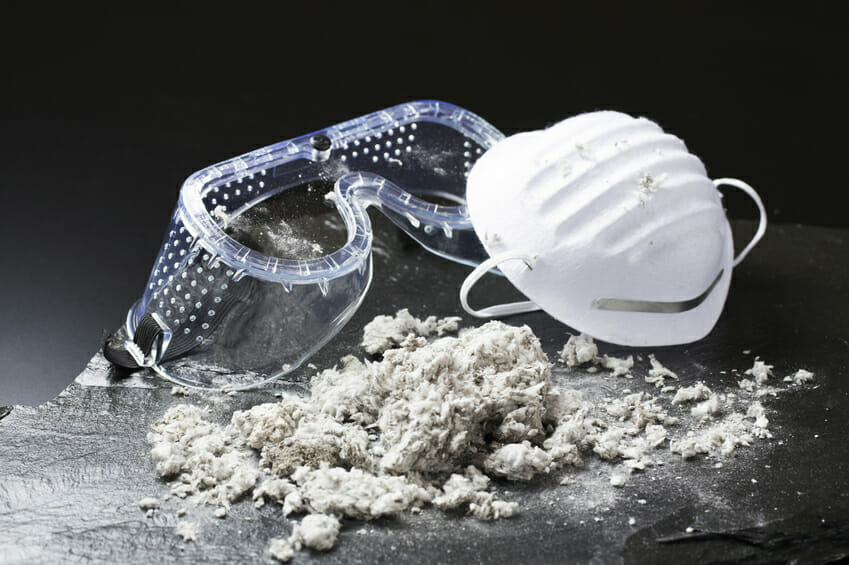Our Asbestos Exposure Attorneys Can Help if You Were Injured
Asbestos Exposure at the Maxwell House Coffee Plant
In April 2018, Atlantis Coffee Solutions, owner of Houston’s classic Maxwell House Coffee Plant, announced it was going out of business and would be shuttering the establishment this summer. Layoffs of the plant’s 279 workers began in June.
The one-million-square-foot facility had a longstanding history in Houston, opening in 1946 and stretching across 18 acres in the city’s East End. In 1988, the building stretched to new heights with the addition of a 16-story tower and the brand’s neon-lit logo. The Maxwell House Coffee Plant was among the world’s largest coffee manufacturing plants.
Asbestos Exposure at the Maxwell House Coffee Plant
Throughout the 1970s and 1980s, the United States government took steps to reduce the amount of asbestos used. However, many older buildings, such as the Maxwell House Coffee Plant, potentially exposed workers and their families to the carcinogenic substance.
Asbestos is a set of naturally occurring minerals that can be separated into durable threads and used in both commercial and industrial applications. The asbestos fibers are heat, fire, and chemical resistant and do not conduct electricity, which led to its use in construction. Asbestos was used to build the Maxwell House Coffee Plant, but was removed by 1991. The removal process took about 4 to 5 years to complete.
There has been a link between asbestos exposure and illnesses such as mesothelioma, asbestosis, and lung cancer. Those who worked at the Maxwell House Coffee Plant in Houston anywhere from 10 to 40 years ago could now exhibit symptoms of mesothelioma, years later. In some cases, even family members could become sick – as a result of asbestos making its way home (e.g., on a worker’s clothing).
Asbestos-related mesothelioma cancers continue to afflict hundreds of thousands of Americans, even though asbestos was removed from general public use decades ago. Today, it’s the cleanup of this carcinogenic substance, used in the past as a commercial insulation substance, which continues to devastate the lives of many.
Today, we welcome the restoration of classic buildings throughout Houston as we embrace our historic past. Sadly, when contractors cut corners on safety – especially surrounding the removal of old materials, including asbestos insulation – it could be a virtual death sentence by mesothelioma for those who work at the site. It could also, conceivably, affect some future occupants of these revived structures.
Even minor past exposure to asbestos at the old Maxwell House Coffee Plant, which sits on 18 acres at 3900 Harrisburg Boulevard in Houston’s East End, could lead to workers’ becoming victims of mesothelioma and other lung diseases. Those who worked at or lived near the Maxwell House Coffee Plant in Houston anywhere from 10 to 40 years ago could now exhibit symptoms of mesothelioma. In some cases, even family members could become sick – as a result of asbestos making its way home (e.g. on a worker’s clothing).
Get Help from Our Asbestos Exposure Lawyers
If you have been diagnosed with mesothelioma or another form of asbestos-related cancer, you need to act quickly. Similarly, if your doctors are concerned about your health given your work history and are considering sending you for a biopsy, now is the time to consider legal help. There are several trust funds established by the courts which can pay for the injuries you suffered as a result of asbestos exposure, and this can help ensure your family is taken care of.
Contact the accident and injury law office of Terry Bryant today by phone at (713) 973-8888 or 800-444-5000, via chat, or online form.
The Mesothelioma Problem Took 100 Years to Fester
In the 1970s – after overwhelming evidence indicated the pernicious health risks of toxic asbestos fibers in structures and consumer products dating back to the turn of the 20th century – the U.S. Environmental Protection Agency (EPA) and the Occupational Safety and Health Administration (OSHA) began banning asbestos from buildings and many consumer products. The EPA also ordered its removal, “as able,” from buildings, ships, factories, petrochemical plants, and other industrial structures, schools, and office buildings. As the 1980s unfolded, asbestos also continued to disappear from manufactured products, but not completely.
Mesothelioma gets its name from the thin layer of tissue (known as the mesothelium) which covers many of our internal organs. The most common area affected by this disease is the lining of the lungs and chest wall. More than 80% of mesothelioma cases are caused by exposure to toxic asbestos fibers; the greater the exposure, the higher the risk. In 2013, it was determined that around 125 million people had been exposed to asbestos at work.
Where Asbestos Can Be Found
Asbestos is still also found in some products sold in the U.S. Many products are imported from other countries, such as:
- Vehicle parts
- Products which contain talc
- Fire safety products
- Science lab equipment
- Fertilizer
- Construction materials.
Though asbestos can be found in a lot of occupational environments, the five most affected job types that correlate to asbestos-related mesothelioma are:
- Construction worker
- Firefighter
- Industrial worker
- Power plant worker
- Shipyard worker.
When Workers (and their Families) Pay for Lack of Asbestos Safety Equipment
Patients who are diagnosed with mesothelioma, asbestos-related lung cancer, or another form of asbestos cancer routinely say that they were not given any warning, training, or respiratory protective gear when handling, installing, loading, repairing, or removing asbestos-containing products.
Family members of those exposed to asbestos second hand are also at risk because the microscopic fibers of this element can invade their homes from their family members’ clothing and body. Over time, the build-up in any confined space, such as a home, can make it impossible for family members to avoid these cancer-causing fibers.
Mesothelioma is a fatal disease. According to the American Cancer Society, for those who are diagnosed with stage 4 (metastatic) mesothelioma, their average survival rate ranges from four to 18 months.
Terry Bryant Helps Asbestos-Related Illness Victims
It Can Be Years Before Asbestos Exposure Symptoms Are Experienced
Oftentimes, the effects of asbestos exposure can take years to manifest. Early symptoms can range from shortness of breath, dry cough, and chest tightness or pain, to the development of more serious diseases such as mesothelioma, asbestos, chronic obstructive pulmonary disease (COPD), lung cancer, and more.
Our Asbestos Exposure Lawyers Can Help Maxwell House Plant Employees
If you or a loved one has been diagnosed with mesothelioma or any other asbestos-related illness, you need to act quickly. Similarly, if your doctors are concerned about your health given your work history and are considering sending you for a biopsy, now is the time to consider legal help. The team of attorneys at the accident and injury law office of Terry Bryant can help.
Contact us by calling (713) 973-8888 or 800-444-5000, via chat, or use our online form.
More Information on Asbestos Exposure and Its Harms:
Attorney Terry Bryant
 Terry Bryant is Board Certified in personal injury trial law, which means his extensive knowledge of the law has been recognized by the Texas Board of Legal Specialization, setting him apart from many other injury attorneys. The 22 years he spent as a Municipal Judge, Spring Valley Village, TX also provides him keen insight into the Texas court system. That experience also helps shape his perspective on personal injury cases and how they might resolve. This unique insight benefits his clients. [ Attorney Bio ]
Terry Bryant is Board Certified in personal injury trial law, which means his extensive knowledge of the law has been recognized by the Texas Board of Legal Specialization, setting him apart from many other injury attorneys. The 22 years he spent as a Municipal Judge, Spring Valley Village, TX also provides him keen insight into the Texas court system. That experience also helps shape his perspective on personal injury cases and how they might resolve. This unique insight benefits his clients. [ Attorney Bio ]


 Terry Bryant is Board Certified in personal injury trial law, which means his extensive knowledge of the law has been recognized by the Texas Board of Legal Specialization, setting him apart from many other injury attorneys. The 22 years he spent as a Municipal Judge, Spring Valley Village, TX also provides him keen insight into the Texas court system. That experience also helps shape his perspective on personal injury cases and how they might resolve. This unique insight benefits his clients. [
Terry Bryant is Board Certified in personal injury trial law, which means his extensive knowledge of the law has been recognized by the Texas Board of Legal Specialization, setting him apart from many other injury attorneys. The 22 years he spent as a Municipal Judge, Spring Valley Village, TX also provides him keen insight into the Texas court system. That experience also helps shape his perspective on personal injury cases and how they might resolve. This unique insight benefits his clients. [ 

